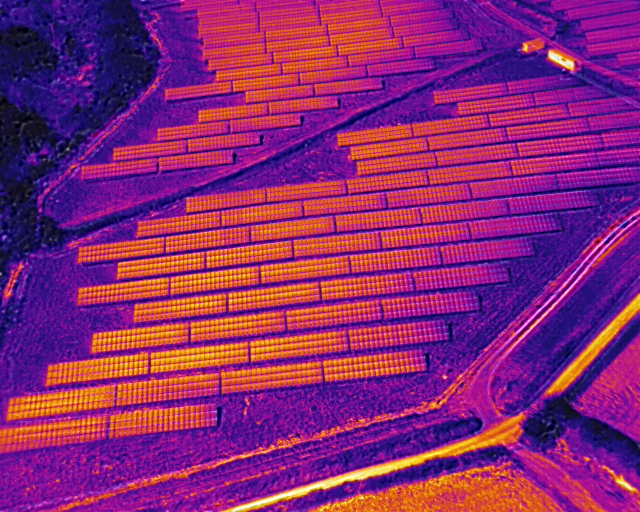
Trethosa Solar Farm Inspection Inline With IEC 62446-3
Natural Generation Ltd, a leading renewable energy company, recently hired Drone Media Imaging to conduct an IEC inspection at Trethosa Solar Farm in Cornwall. The inspection process involved the flight of thermal drones to collect calibrated thermal imaging data which shows the faults and naomalies that may exist.
Conducting an IEC Inspection at Trethosa Solar Farm in Cornwall
Solar energy has emerged as a promising alternative to traditional sources of electricity, offering a clean and sustainable solution to meet the world’s growing energy demands. As the solar industry continues to expand, it becomes crucial to ensure the safety and efficiency of solar farms. To that end Drone Media Imaging was hired to conduct an IEC-IEC 62446-3 (International Electrotechnical Commission) inspection at Trethosa Solar Farm in Cornwall, managed by Natural Generation Ltd.
Understanding the Importance of IEC Inspections for Solar Farms
IEC inspections play a vital role in ensuring the safe and reliable operation of solar farms. These inspections are conducted to assess compliance with international standards and regulations, identify potential risks, and recommend necessary improvements. Solar farms are complex systems that involve various components, including solar panels, inverters, transformers, and electrical connections. Regular Thermal IEC inspections help identify any module and string issues or faults that may compromise the performance and safety of the solar farm.
IEC inspections contribute to the overall efficiency and performance of solar farms. By assessing the condition of solar panels and other components, these inspections help identify any inefficiencies or malfunctions that may affect the energy output. By addressing these issues early, solar farm operators can optimise the performance of their facilities and maximise energy generation.
Conducting regular IEC inspections at solar farms, such as Trethosa Solar Farm in Cornwall, is crucial for ensuring safety, efficiency, and optimal performance. These inspections help identify potential risks, recommend necessary improvements, and contribute to the overall success of the solar energy industry. By adhering to international standards and regulations, solar farm operators can maximize energy generation while maintaining a safe working environment.
#IEC624463 #ThermalImaging #ThermalInspection #TrethosaSolarFarm
https://www.dronemediaimaging.co.uk/solar-farm-iec-inspection-at-trethosa-in-cornwall/
Comments